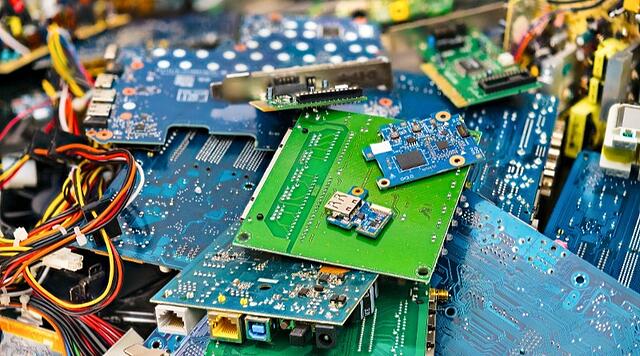
Electronic component shortages have been a hindrance on booming electronics marketplaces since 2018. While new orders roll in and production remains steady, there simply haven’t been enough capacitors, resistors and other parts to go around.
After tariffs were imposed on imported Chinese goods and factories were shut down due to the coronavirus, OEMs raced to understand what was ahead for their already-constrained inventory. But, COVID-19 was not the only culprit -- it's actually exposed pre-existing cracks in the supply chain.
Here's why 2022 is shaping up to be another difficult year:
ELECTRONIC COMPONENT SHORTAGES: CAN SUPPLY CHAINS THRIVE POST-COVID?
The COVID-19 pandemic certainly threw everyone for a loop, but electronics manufacturers especially suffered thanks to supply chain disruptions and component shortages.
The pandemic shut down a lot of avenues for raw materials and bulk electronic components, leaving manufacturers with half-finished products and idle capacity. Many components come from supply chains in Asia, and since China was ground zero for the coronavirus, the shortages started to affect U.S. manufacturers before the virus hit American soil.
In an April 2021 report, JJS Manufacturing detailed how the chip shortage is affecting more than just the auto industry. Shortages are now reaching across all manufacturers, industries, and products.
Shortages aren’t the only problem -- so are rising prices. As demand for electronic components rise, the supply dwindles and costs increase.
Thanks to the U.S. stimulus package, many electronics manufacturers were able to stay on their feet and even begin retooling for production of much-needed electronics like ventilators or thermometers.
But will it be enough?
GETTING OVER THE PANDEMIC HUMP
From the outset of 2021, the outlook for the electronics manufacturing industry has steadily grown murkier.
Many PCBs, semiconductors, and microchips are still produced in Asia, and with the ongoing supply chain disruptions, some electronics manufacturers are looking at moving their operations back to familiar soil.
But, component shortages persisted in 2021 as many valuable raw materials were in low supply or completely unavailable. 2022 is shaping up to be another long wait.
SEMICONDUCTOR SHORTAGE
In Q1 2021, the semiconductor supply chain joined the long list of those facing shortages.
A report from ElectronicsB2B indicated that the semiconductor industry value is set to increase by 11% from 2020 to 2027.
Plagued with increasing demand, semiconductor chip manufacturers are bottlenecked going back many months -- and orders haven't slowed down.
It's becoming evident that the semiconductor shortage is less about the COVID-19 pandemic and more about critical issues in the supply chain infrastructure. The semiconductor industry will face further uncertainty into 2022 due to:
- Adoption of 5G-based automation
- Increased general chip demand
- Geopolitical factors (such as the US' current sanctions on China)
The end game is to simply produce more semiconductors worldwide. For American OEMs, producing more chips domestically reduces lead times and other risks associated with importing.
RESHORING ELECTRONIC COMPONENT SUPPLY CHAINS
If COVID-19 has shown us anything, it’s that supply chains are surprisingly volatile. The longer a supply chain is, the more susceptible it is to disruptions, so US electronics manufacturers should start finding suppliers closer to home. This will minimize the risk of expensive delays in production lines and reduce lead times.
Plus, supply chains that are closer to home are less likely to be affected by global disruptions. If there’s a natural disaster in India, chances are it won’t affect your supply chain in Canada.
Reshoring is growing in popularity amongst manufacturers in all industries. There’s a decreased risk of potential cybersecurity risks, and overall transportation costs are lower.
ON-TIME DELIVERY OF ELECTRONIC COMPONENTS
One of the benefits of reshoring component supply chains is punctuality. We all hate it when our Amazon packages are a day late, but just imagine waiting on an order of crucial electronic components for months.
By bringing supply chains closer to home, we can start to fix this problem. Sure, there are still going to be component shortages or blips in the manufacturing process, but supply chains based closer to their manufacturing end-destinations are more likely to deliver products on-time.
2021 AND BEYOND
So far in 2021, component shortages have not gotten much better. Supply chains are bottlenecked by:
- High demand
- Lack of producers
- COVID-19 lockdowns
- Expensive and unreliable lead times
However, you can still put your company in a position to succeed by staying informed and planning accordingly.
Make sure to speak with your supplier to fully understand how electronic shortages are impacting you both. And remember to be patient – everyone is in the same boat, and we’re simply riding out the storm.


